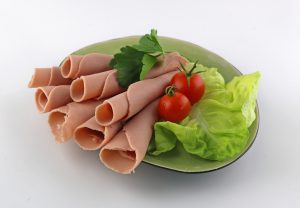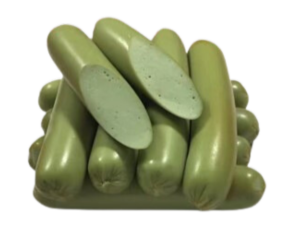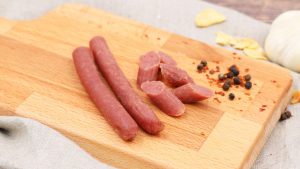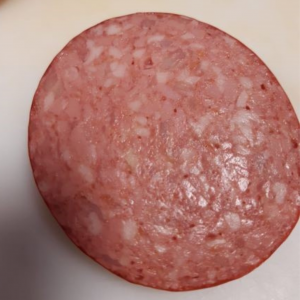The origins of sausages
In prehistoric times, men went hunting when food was needed. Meat that could not be eaten around the time of the hunt or the slaughter of the herd had to be preserved. But how? That is the point where the history of sausage making begins.
All over the world, societies discovered how to treat the meat so that they could preserve it longer. Preservation was done by drying, salting, smoking, cooking or cooling.
Native Americans made Pemmican for example. This is a dried meat cake with fat and dried berries, to be eaten during the winter months.
In other parts of the world, too, new sausages were developed, often based on the climate.
In colder regions, more cured and cooked products were developed, which could be kept chilled or frozen longer due to the colder temperature zones.
In warmer regions, more dried and cured products were developed to preserve for longer time the meat used in those warmer regions,
Sausage-making developed very rapidly in Europe in the Middle Ages. Sausage making was a commercial speciality of the butchers’ guild and had the same status as blacksmithing, milling or bricklaying.
Natural, animal casings serve as a casing to produce sausages:
To make the process of drying, cooking and smoking the mixed pieces of meat easier, a convenient casing was sought that would hold the meat mixtures together well during the production process. For this purpose, the mixtures were placed in natural containers (e.g. natural casings).
These containers often came from the same animals as where the meat came from. Therefore, the casings of sausages often contained beef, pork, sheep stomach, lung or small intestine.
1925: Emergence of cellulose as an alternative to natural casings
After thousands of years of development, progress in meat science and the Industrial Revolution, sausages were still made in much the same way as they had been for the previous millennia
No major changes took place in sausage production until cellulose appeared on the market in 1925. To develop a natural and cheaper alternative to animal casings, Erwin Freund produced cellulose casings made from cotton linters, the so-called artificial casings.
Cellulose is not digestible, but if you process the cellulose casing correctly around the meat mixture, the proteins from the meat develop into a sheet. The artificial casing can then be removed with so-called sausage peelers while the sausage retains its shape.
Sausage without skin
Not everyone likes the firm bite of a sausage in a natural casing and therefore there were people who removed this casing before consumption. The skinless sausage did not have this problem.
The Hot Dog (sausage without skin) in particular, which was introduced at the turn of the century as a popular food at a world fair, benefited from this advance in casing technology.
Therefore, many Hot Dog manufacturers quickly switched to the new, cheaper casing. This helped them cut costs and sell even more Hot Dogs. The rest is history
1960: Emergence of edible collagen
In 1960, the company Johnson & Johnson was working on the development of a stronger surgical suture material than animal intestinal mucus. The collagen for this was harvested from the middle layer of bovine hides.
In this way, the company discovered a way to make edible collagen casings. These harvested collagen casings were stronger, more uniform and much more hygienic than traditional natural casings.
Late 20th, early 21st century
The industry still chopped, ground or emulsified meat, fat and spices into a meat mixture and put it into natural, edible collagen casings or into cellulose casings to make sausages.
The basic process was still the same as before, but now it was done with high-speed machines and sophisticated formulations that could contain little or no meat.
The casings were filled, linked together and hung on sticks. These sticks full of casings were put on trucks or carts and taken to ovens where they were cooked or smoked or both. Then the sausages were cooled, separated or peeled and packed for the final consumer.
At the turn of the century, a new revolutionary technology, co-extrusion, was invented to process meat into sausages more cheaply and hygienically. Normally, sausages are made by stuffing a meat dough into a natural casing or a preformed artificial casing. With this new technology, during the production process, a sausage dough (on the inside) is covered with an extremely thin layer of intestinal gel on the outside. This made it possible to process meat into sausages more cheaply and hygienically. Other advantages of coextrusion in modern sausage making, such as speed and uniformity, also turned out to be evident.





